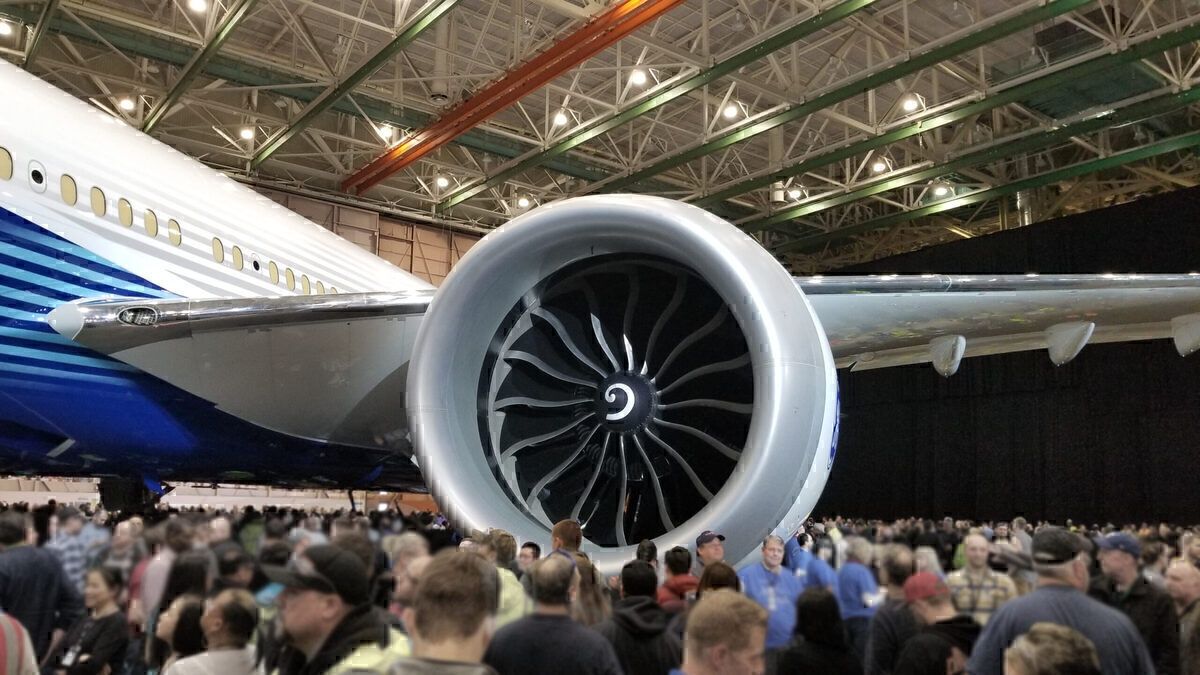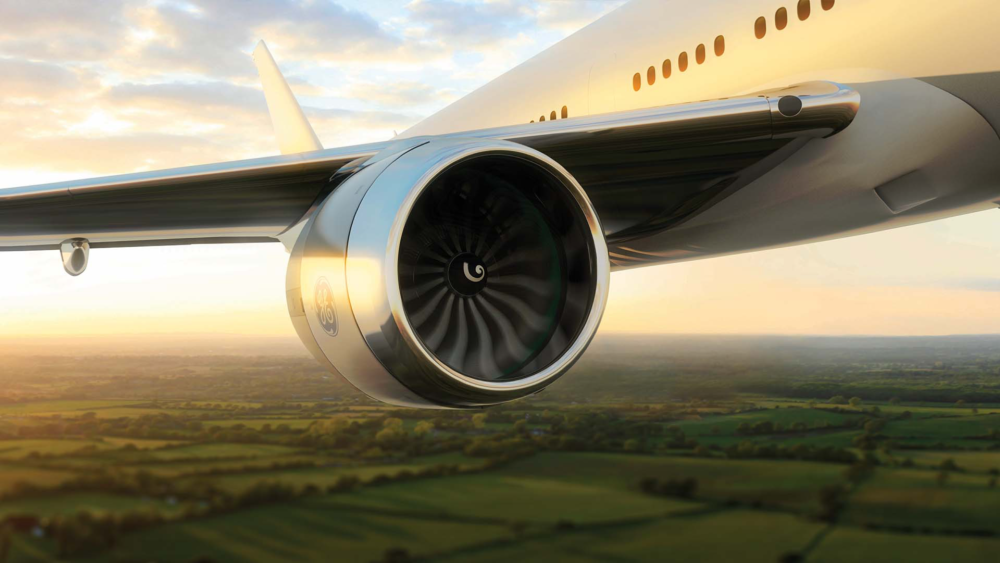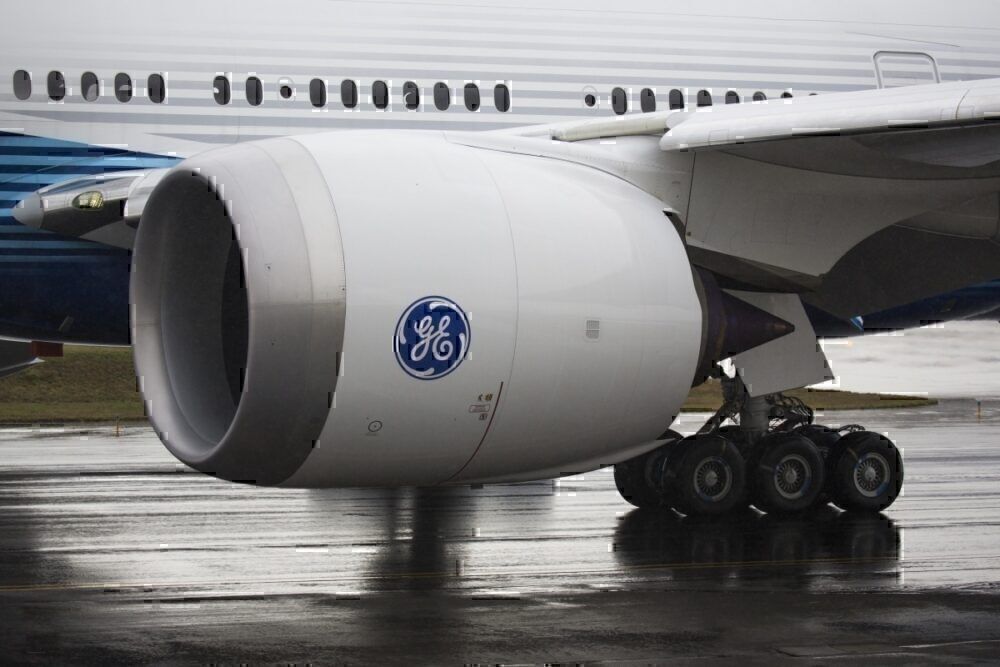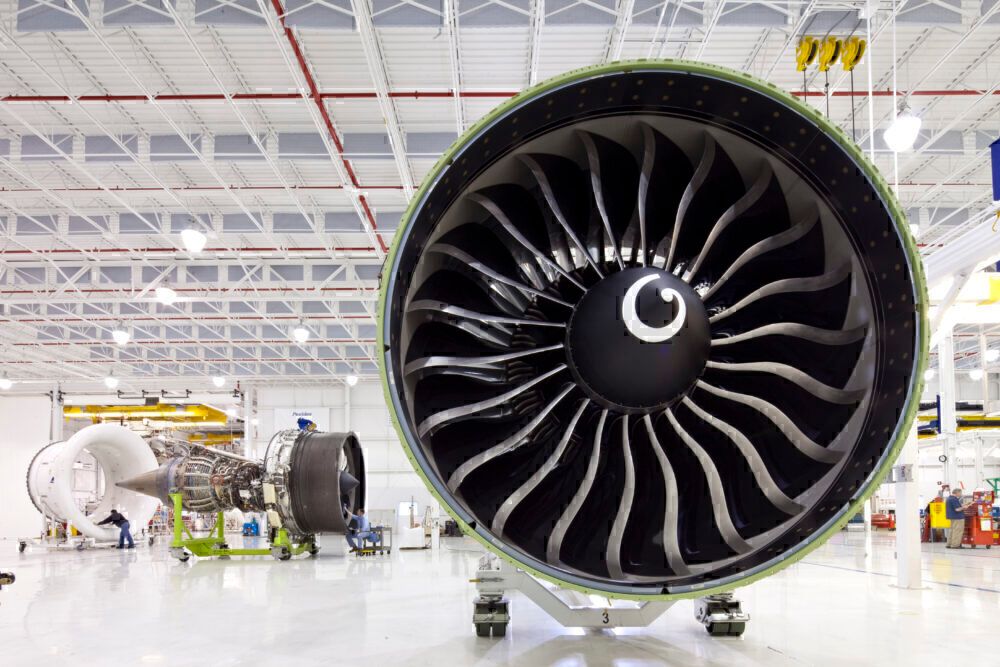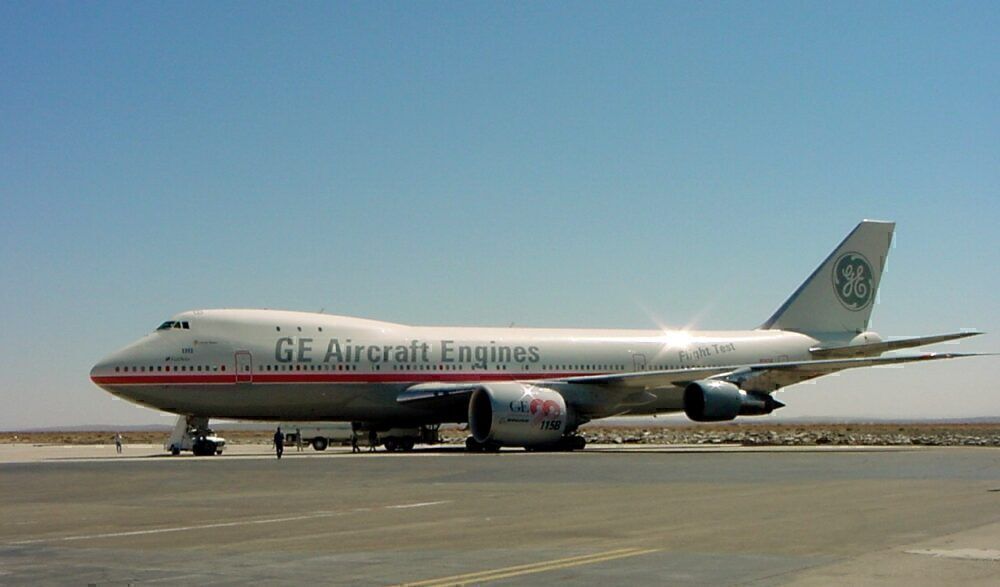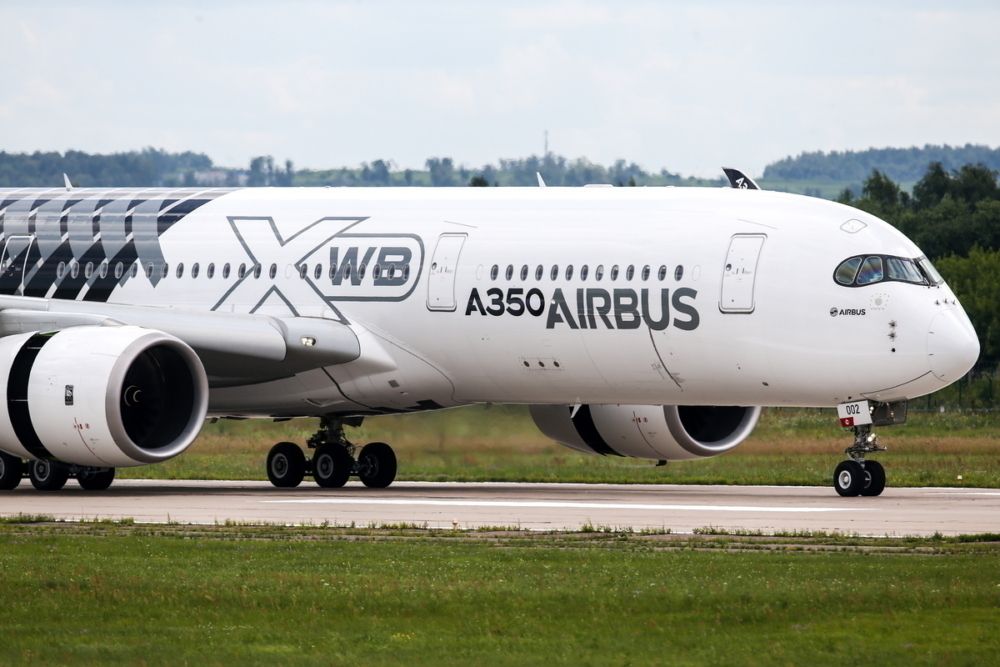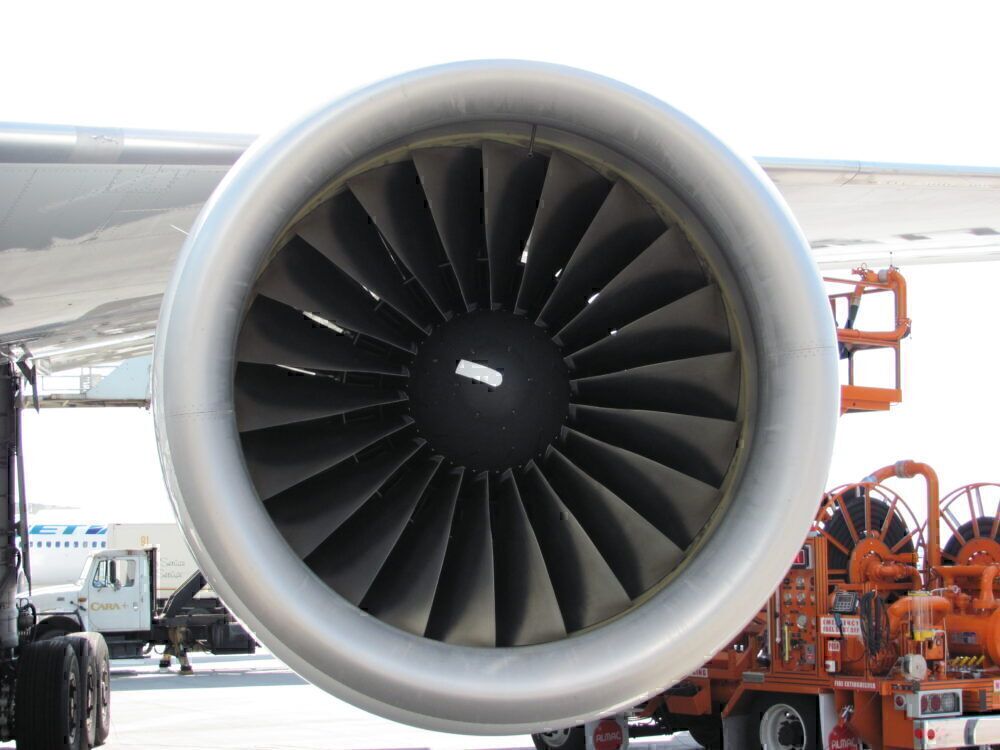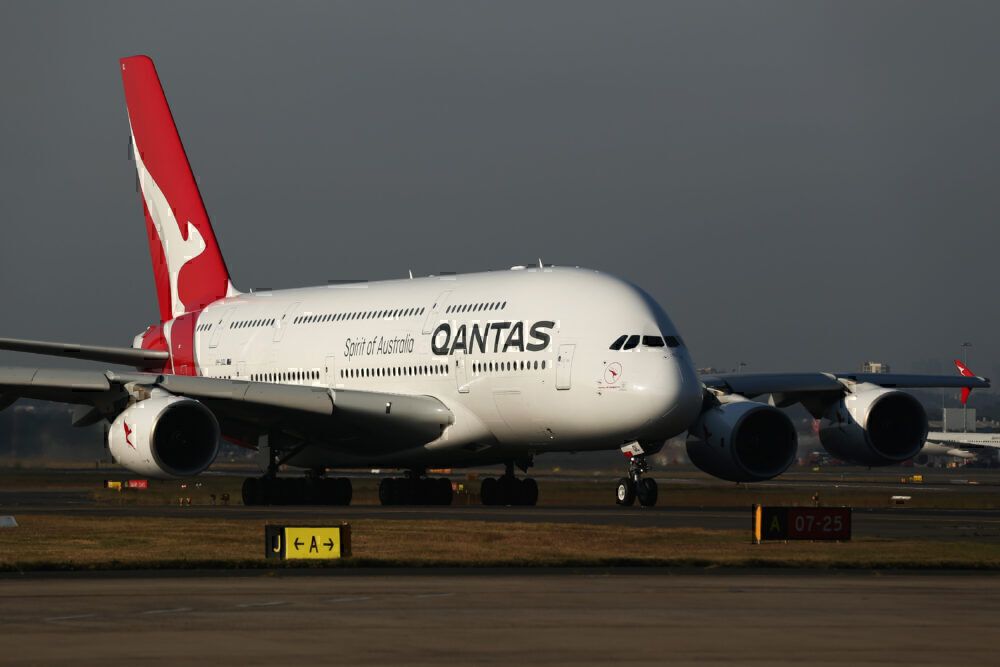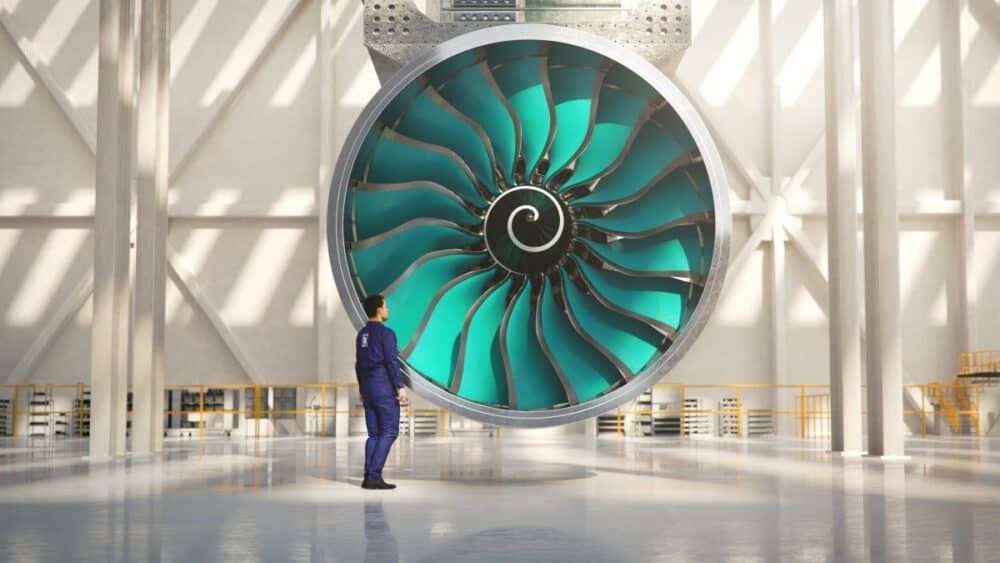Improving engine technology over the past decades has played a major part in the advance of jet aircraft. Engines have become more powerful and more efficient. And with this, they are generally much larger. But which are the largest?
Size isn't everything with engines (there comes the point where they are too heavy), but engineering larger fans has led to improved performance. The Pratt & Whitney JT3D engines offered for the Boeing 707 for example have a fan diameter of just 130 centimeters. The largest engines today are over double this size.
GE9X - the biggest engine
The largest commercial jet engine offered to date is the General Electric GE9X engine. This has been designed for the new Boeing 777X. It is developed from the GE90 engine but has a larger fan and lighter construction. The GE9X holds the Guinness World Record for the highest recorded thrust, a huge 134,300 pounds. It is also 10% more fuel-efficient than its predecessor.
And for size, the front fan diameter is 340 centimeters. The total engine diameter is closer to four meters, making it wider than the fuselage of a Boeing 737.
It has not all been smooth, though, with the introduction of the world's largest engine. Issues with the high-pressure compressor have been a leading factor in the delayed launch of the 777X. The situation has improved in 2020, though, with the 777X completing several test flights and the GE9X engines receiving FAA certification in September.
John Slattery, president, and CEO of GE Aviation, commented on the milestone reached, saying at the time of the engine's certification:
“It takes the world’s best talent in jet propulsion to create a game-changing product like the GE9X engine. There is no substitute that can achieve the combination of size, power, and fuel efficiency of the GE9X. This engine will deliver unsurpassed value and reliability to our airline customers."
Best of the rest - the GE90
Before the new GE9X engine was revealed, the largest and most powerful engine was also from General Electric, the GE90. And given that the 777X has yet to enter commercial service, this, technically, remains the largest engine in airline service.
The GE90 is used on the Boeing 777. It is an option for the 777-200, 777-200ER, and 777-300, and the only engine on the 777-200LR and 777-300ER. The largest GE90-115 model has a fan diameter of up to 330cm and provides a thrust of up to 115,540 pounds (although it has recorded a maximum of 127,900 pounds).
Rolls-Royce Trent XWB
The largest engine from Rolls_Royce, and the third-largest overall, is the Trent XWB. This was first run in June 2010 and is the only engine used for the Airbus A350. There are two versions for the A350-900 and the A350-1000 (the XWB-84 and XWB-97), providing a thrust of up to 84,200 and 97,000 pounds, respectively.
The fan for the Trent XWB has a three-meter diameter. It is the same for both A350 engines, with the A350-1000 engine running faster, with strengthening to withstand the higher forces.
Pratt & Whitney PW4000-112
The PW4000-112 is the largest and most powerful, in a long run of the PW4000 family. The PW4000 first entered service in 1984, with the PW4000-94 offered on the 747-400 and 767-200/300 as well as the Airbus A300 and A310.
The largest PW4000-112 was designed for the Boeing 777 and is one of the three options for all models except the 777-200LR and 777-300ER. It has a fan diameter of 284 centimeters (up from 239 centimeters for the first PW4000 engines). It is certified for thrust up to 90,000 pounds.
Rolls-Royce Trent 900
The Rolls-Royce Trent 900 was launched in 2003 for the A380. It is derived from (and is slightly larger than) the Trent 800 engine. It went on to be developed into the Trent 1000 for the Boeing 787, but this is a smaller engine.
The Trent 900 has a fan diameter of 295 centimeters. And it offers thrust of up to 81,000 pounds.
Rolls-Royce Trent 800
And coming in slightly smaller is the Rolls-Royce Trent 800. This was one of the engine options for the 777 and entered service in 1996 with Thai Airways. With a thrust of 95,000 pounds, it was an incredible offering at the time. It was also the lightest of the three 777 engine options. Unfortunately, though, it too was not offered for the 777-300ER or the 777-200LR.
In terms of size, the Trent 800 has a fan diameter of 280 centimeters.
Coming soon - the Rolls-Royce UltraFan
Plans are already underway for larger engines. Currently, Rolls-Royce is set to move ahead of General Electric for the top spot in engine size.
It has started the development of its newest engine, named the UltraFan. This will have a fan diameter of 140 inches (355.6 centimeters). The huge blades are manufactured using composite materials, keeping them light despite the size. They are already under construction at its Bristol site. According to the engine manufacturer, the first generation UltraFan will be 25% more fuel-efficient than its Trent engines.
Rolls-Royce estimates that ground tests for the new engine will commence sometime in 2021. In a press release in 2014, the company indicated the engines could be ready for service by 2025, but this remains unconfirmed.
Would you like to share any thoughts or comments about aircraft engines and their development? Let us know in the comments.

